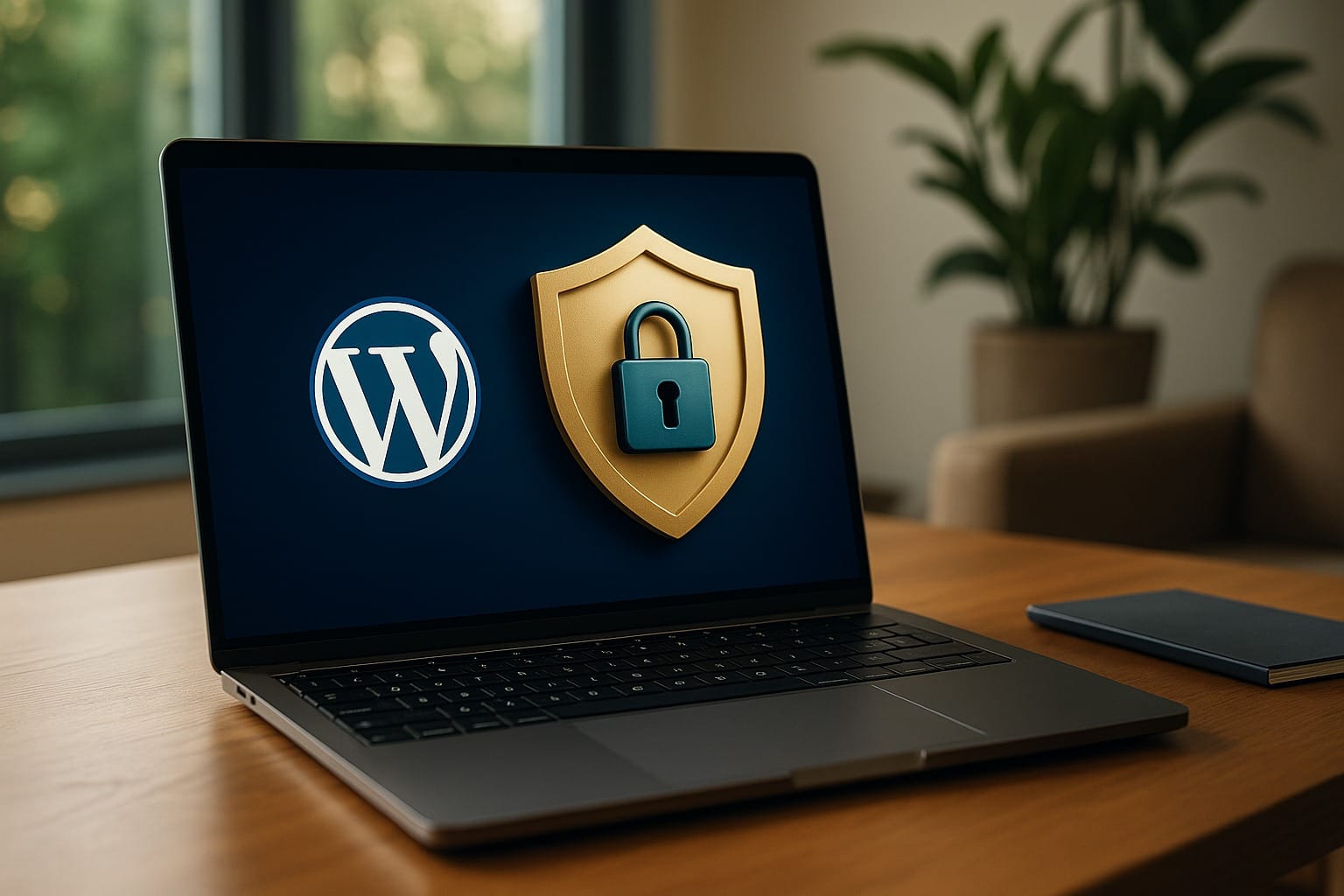When it comes to running a successful business website, especially for counsellors, therapists, and wellness professionals, security should never be an afterthought. WordPress is a fantastic platform for growing your online presence, but its popularity also makes it a prime target for cyber threats. If you’re investing in your website’s look, feel, and functionality, it’s just as crucial to invest in its safety. Whether you’re building your first site or managing an established one, understanding WordPress security is a must for protecting your reputation and your clients’ sensitive data.
Understanding the Importance of WordPress Security
WordPress powers a significant chunk of the internet, making it a frequent target for hackers and malicious bots. The sheer volume of attacks is staggering—WordPress sites experience an average of 90,000 attacks per minute. That means every minute your site is live, it could be at risk if you’re not taking the right precautions. Security isn’t just about locking the doors; it’s about making your entire digital property less attractive to would-be intruders.
For small and medium-sized businesses, especially those in sensitive sectors like counselling and wellness, a security breach can have major consequences. Compromised websites can lead to stolen client information, a loss of trust, and even legal headaches. Even a simple malware infection can ruin your search engine rankings and cause potential clients to steer clear.
Investing in WordPress security is not just about avoiding negative outcomes. It’s about creating peace of mind so you can focus on what you do best—helping your clients. With a secure website, you’re building a solid foundation for your business’s growth and credibility.
Common Vulnerabilities in WordPress Websites
One of the most important things to know as a website owner is where your weaknesses lie. While WordPress itself is regularly updated and patched, vulnerabilities often arise from other parts of your site setup. Did you know that approximately 90% of WordPress vulnerabilities originate from third-party plugins? These plugins can add fantastic features, but if they’re poorly coded or not maintained, they open the door to attackers.
Another huge concern is cross-site scripting, also known as XSS. Cross-site scripting (XSS) accounts for 47.7% of WordPress vulnerabilities. This type of attack allows hackers to inject malicious scripts into your website, which can then compromise your users’ data or redirect them to unsafe sites. XSS vulnerabilities are especially dangerous because they often go unnoticed by site owners and visitors alike.
In addition to plugins and XSS, there are other threats to be aware of:
- Outdated themes and core files: Hackers often target sites running old versions of WordPress or themes that haven’t been updated.
- Weak passwords and user permissions: Simple passwords and unnecessary admin accounts are common targets for brute force attacks.
- Malware infections: In 2023, over 1.1 million WordPress sites were found to contain malicious files. Malware can quietly siphon data or disrupt your website’s operations.
- SQL injection: This attack method exploits poorly secured forms or database queries, allowing hackers to manipulate or steal data.
Understanding these vulnerabilities is the first step toward making your website safer. When you know the risks, you can take action to minimize them and keep your site running smoothly for your clients.
Best Practices for Securing Your WordPress Site
The good news is that you don’t have to be a cybersecurity expert to keep your WordPress site secure. There are proven strategies and simple habits that can make a big difference. Here’s what we recommend at RTWD:
- Keep everything updated: Always update WordPress core, themes, and plugins as soon as new versions are released. Updates often patch security holes before hackers can exploit them.
- Limit plugins to only what you need: Since most vulnerabilities come from plugins, only use trusted, actively maintained ones. Remove anything you’re not using.
- Use strong, unique passwords: Make sure every user account on your site has a secure password. Consider enabling two-factor authentication for extra protection.
- Set proper user roles and permissions: Don’t give admin access to anyone who doesn’t need it. Review your user list regularly.
- Install a reputable security plugin: Tools like Wordfence or Sucuri can add extra layers of protection, monitor for suspicious activity, and block common threats. Wordfence blocks approximately 120 million attacks every day.
- Regularly back up your site: Backups are your safety net. Store backups offsite and schedule them to run automatically, so you can quickly restore your site if something goes wrong.
- Use SSL/HTTPS: Secure your site with an SSL certificate to encrypt data between you and your visitors. This is essential for any site collecting personal information.
- Disable file editing in the dashboard: Prevent hackers from editing your theme and plugin files by disabling the file editor in wp-config.php.
- Limit login attempts: Set up your site to lock out users after a certain number of failed logins. This helps stop brute force attacks before they gain access.
It’s also worth regularly scanning your site for malware and vulnerabilities. Many security plugins offer this feature, or you can use an external service. If you ever suspect your site has been compromised, act quickly by restoring a backup and seeking professional help.
While all these practices might sound like a lot, many of them can be automated or handled by your web designer or hosting provider. At RTWD, we build security into the foundations of every WordPress site and offer ongoing care plans so you never have to worry about it.
The Role of Managed Hosting in WordPress Security
Your choice of web hosting plays a huge role in how secure your website is. Managed hosting is much more than just a place to park your files—it’s a proactive service that keeps your site running smoothly and securely. With managed hosting, you get a team of experts who monitor for threats, apply updates, and handle technical issues before they become serious problems.
Standard shared hosting often leaves security up to the site owner, which can be risky if you’re not sure what you’re doing. Managed hosting, like the solutions offered by RTWD, takes care of:
- Automatic updates: Ensuring your WordPress core, plugins, and themes are always up to date.
- Server-side security: Proactive firewalls, malware scanning, and intrusion detection systems.
- Daily backups: So you can restore your site quickly in case of any problems.
- Expert support: Access to knowledgeable help when you need it most, so you’re never left dealing with issues on your own.
Having your hosting and website care under one roof can save you time, reduce stress, and give you the assurance that your site is always being watched over. For business owners who want to focus on their clients—not troubleshooting tech issues—managed hosting is a smart investment.
Regular Maintenance and Monitoring: Key to Ongoing Security
Security isn’t a one-and-done job it’s an ongoing process. Hackers are constantly developing new ways to break into websites, so regular maintenance and monitoring are essential. This means scheduling routine updates, scanning for vulnerabilities, and reviewing user accounts.
Many business owners underestimate just how important this is. If you’re not keeping a close eye on your website, you could miss early warning signs of an attack. In 2023, over 1.1 million WordPress sites were found to contain malicious files. Regular monitoring helps catch these issues before they cause real damage.
Some of the regular maintenance tasks we recommend include:
- Applying updates weekly (or as soon as they’re available): Don’t let outdated software give hackers an easy way in.
- Reviewing and removing unused plugins and themes: Fewer components mean fewer opportunities for attackers.
- Monitoring security logs: Stay on top of any unusual login attempts or changes to your files.
- Running malware scans: Catch infections early and eliminate them quickly.
- Testing backups: Make sure your backups actually work before you need them.
If you’re short on time, consider a website care plan. At RTWD, we handle all of this for you, so you can focus on what matters most—serving your clients and growing your business. With the right maintenance and monitoring in place, your WordPress site will be well-protected against evolving threats, giving you peace of mind and a secure foundation for your online presence.


